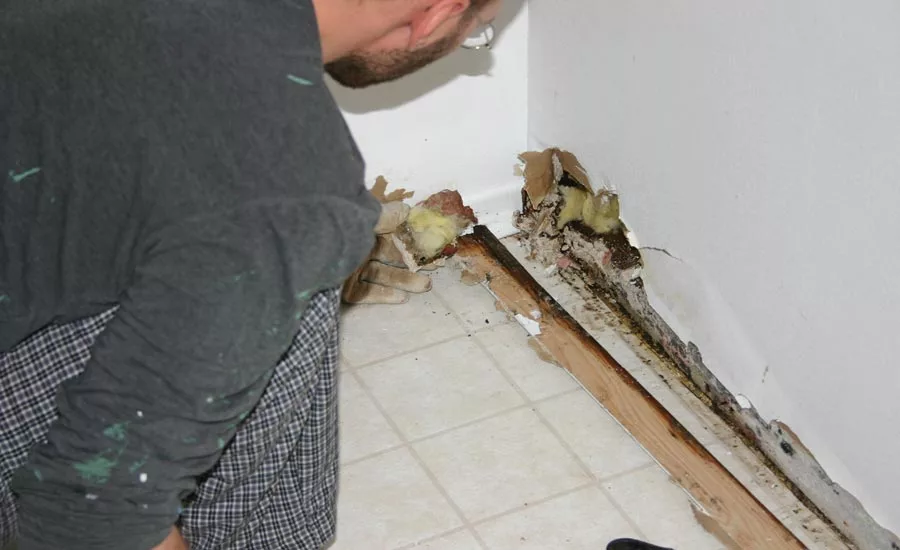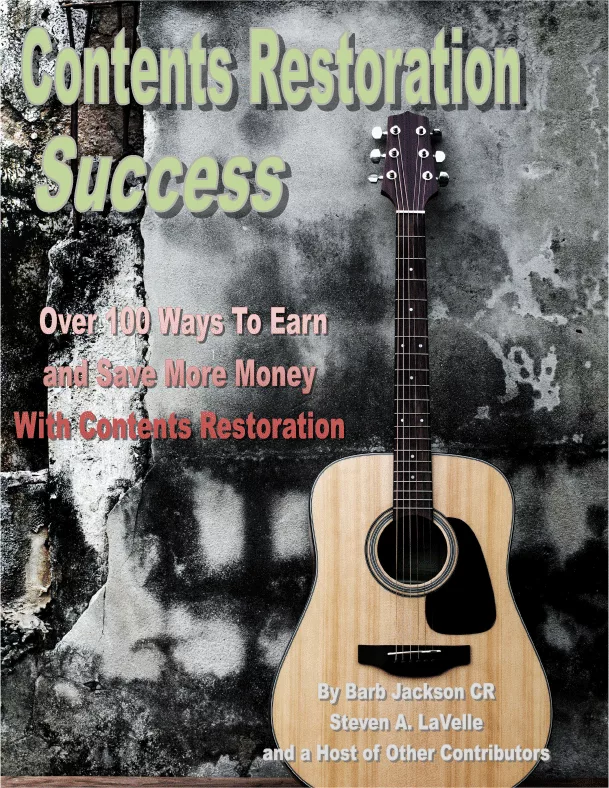CAT Claims: Financial Ruin or Financial Success
Understanding what is covered, what is not, and how to fill the insurance gaps.



Catastrophes, while terrible for people in the affected area, produce a lot of restoration and remediation work in a concentrated area, making them an incredible business opportunity for restoration contractors.
Working catastrophe claims (CAT claims) is a place where a restoration contractor can really help people put their lives back together. The more you can do as their contractor to help the situation along as smoothly as possible, the better.
The role of insurance in CAT claims
The insurance mechanism is designed to provide indemnity for losses incurred from catastrophic events such as wildfires, tornados, hurricanes, lightning strikes, and the list goes on and on. A majority of damages from CAT events are paid for by property policies or flood insurance policies if that coverage has been purchased. For that reason, it is in your best interest to understand what and how these policies provide coverage for various CAT claims, because in the end, that is how you get your paycheck.
Understanding your client’s property insurance policies
Property insurance policies, as I’m sure you’re aware, are designed to cover losses to real property and personal property (AKA buildings and people’s stuff). A majority of residential and commercial property policies are on what is referred to as a Special Form or All Risks Coverage. The policy states the insurance company will insure for accidental direct physical loss to covered property except for losses not covered in the exclusions section of the policy. That may sound like a pretty good deal; however, you would be surprised at the significant gaps in coverage on standard property policies. Things such as flood, sewage backup, fungus/mold, bacteria, and Category 3 water because of the bacteria it contains are commonly either excluded or subject to a very small limit of liability on property insurance policies.
The following language was taken from a commercial property policy written by a well-known standard commercial property insurer. It is a fungus (mold), wet rot, dry rot, and bacteria exclusion:
“We will not pay for loss or damage caused directly or indirectly by the presence, growth, proliferation, spread or any activity of “fungus”, wet or dry rot or bacteria. Such loss or damage is excluded regardless of any other cause or event that contributes concurrently or in any sequence to the loss.” (Philadelphia Policy)
Fungus/mold exclusions are standard for property policies. Some policies may provide a sublimit, usually $10,000 to $25,000, for damages from and the clean-up of mold and bacteria, but that hardly seems like enough given what we know about the average remediation job.
Keep in mind, Category 3 water will trigger the mold and bacteria exclusion. Per the ANSI/IICRC S500, Category 3 water is “grossly unsanitary water arising from sewage or other contaminated water sources and having the likelihood of causing discomfort or sickness if consumed by or exposed to human. This category includes all forms of seawater, ground surface water and rising water from rivers or streams.” Category 3 water encompasses a wide range of water from toilet backflows to full-on flood waters.
Flood exclusions and flood insurance policies
Below is the common language for a flood exclusion on a property policy:
This insurance does not apply to loss or damage caused by or resulting from:
- waves, tidal water or tidal waves; or
- rising, overflowing or breaking of any boundary of any natural or man-made lakes, reservoirs, ponds, brooks, rivers, streams, harbors, oceans or any other body of water or watercourse, whether driven by wind or not, regardless of any other cause or event that directly or indirectly contributes concurrently to; or
- contributes in any sequence to, the loss or damage, even if such other cause or event would otherwise be covered. (Chubb Policy)
Flood insurance can sometimes be added by endorsement to a property policy, but is usually purchased as a separate policy. The National Flood Insurance Program (NFIP) is a common market for flood insurance coverage in the United States. Flood insurance policies are designed to fill the coverage gap created by the flood exclusion and insure against direct physical loss from a flood. Without flood insurance, the property owner is completely without insurance for a flood because of the anti- concurrent causation clause in the property policy. This is the “contributes concurrently to” or “contributes in any sequence to” language in the above exclusion. It acts as a trump card and excludes coverage under the property policy if flooding is involved in any way or at any time.
Some property policies have broad water exclusions that incorporate the flood exclusion and also exclude coverage for damages from mudslides or mudflow; sewer, drain, and sump pump backups or overflows; and groundwater pressing on, or flowing or seeping through foundations, walls, floors, basements, and other opening likes doors and windows.
One nice thing about a flood policy is it does not contain a fungi/bacteria exclusion.
What does this mean for you as the contractor?
Whether or not they are covered by their insurance company for a claim makes a big difference on how and when you get paid for your work. Or in the case of excluded causes of loss, maybe you will not be paid at all for the work you do, especially in the case of floods or any loss involving remediating a speck of any type of fungus/mold/ bacteria or Category 3 water in the scope of work.
Understanding YOUR company’s liability policy - fungi or bacteria exclusions
Anti-concurrent causation language like that found in a property policy flood exclusion is found in the Fungi or Bacteria Exclusion on 92 percent of all the General Liability (GL) insurance policies sold to restoration contractors. Based on insurance coverage reviews performed on a sample of 5,000 GL policies sold to restoration contractors, nine out of 10 restoration firms working on typical CAT claim project have no effective GL coverage at the job site today. To correct this gap in coverage, contractors should purchase a combined form GL, Contractor’s Pollution Liability, and Professional Liability policy that does not contain this language within the fungi or bacteria exclusion:
This insurance does not apply to: Any loss, cost or expenses arising out of the abating, testing for, monitoring, cleaning up, removing, containing, treating, detoxifying, neutralizing, remediating or disposing of, or in any way responding to, or assessing the effects of, “fungi” or bacteria, by any insured or by any other person or entity.
With the above wording in the GL, any claim that arises out of your work abating, testing for, monitoring, cleaning up, removing, containing, treating, detoxifying, neutralizing, remediating or disposing of, or in any way responding to, or assessing the effects of, “fungi” or bacteria is clearly not covered by your insurance policy.
A job site exclusion on most restoration contractor insurance policies deserves some explanation. In theory, if an employee puts a cigarette out in the wrong place on a mold remediation project and burns down three condos, the fire loss excluded. We actually had one of our customers do that, but he had insurance for the $940,000 GL loss.
A little known fact is that the purchase of a CPL policy alone will not correct what is effectively a job site exclusion on the GL insurance policy. Restoration contractors, for self-preservation purposes, must be conscious of those coverage gaps when working CAT claims.
Conclusion
There are specialized environmental insurance policies available to fill the coverage gaps of property owners, but for the same reasons more than 90 percent of restoration firms are sold GL policies with fundamental insurance coverage gaps for CAT work, at least 95 percent of property owners are needlessly underinsured for flood/mold/fungi/bacteria and Category 3 water related losses. The root cause of the insurance problem is insurance agents have not learned the subject matter necessary to deal with the coverage gaps created by fungi bacteria, category 3 water exclusions.
If you perform any services related to fungi/mold/bacteria /Category 3 water, I highly encourage you to check your own GL policy to see if you have what amounts to a job site exclusion for these projects. A simple way to do so is ask you insurance agent if you have coverage for Category 3 Water. If the answer is “What is Category 3 water?”, there is a nine out of 10 chance that you have a material gap.
If you’re at all concerned about your insurance coverage and want help sorting things out, I will review your GL policy free of charge or obligation. It takes me about 30 seconds to find this common gap in coverage on the GL policies sold to restoration contractors.
Looking for a reprint of this article?
From high-res PDFs to custom plaques, order your copy today!






